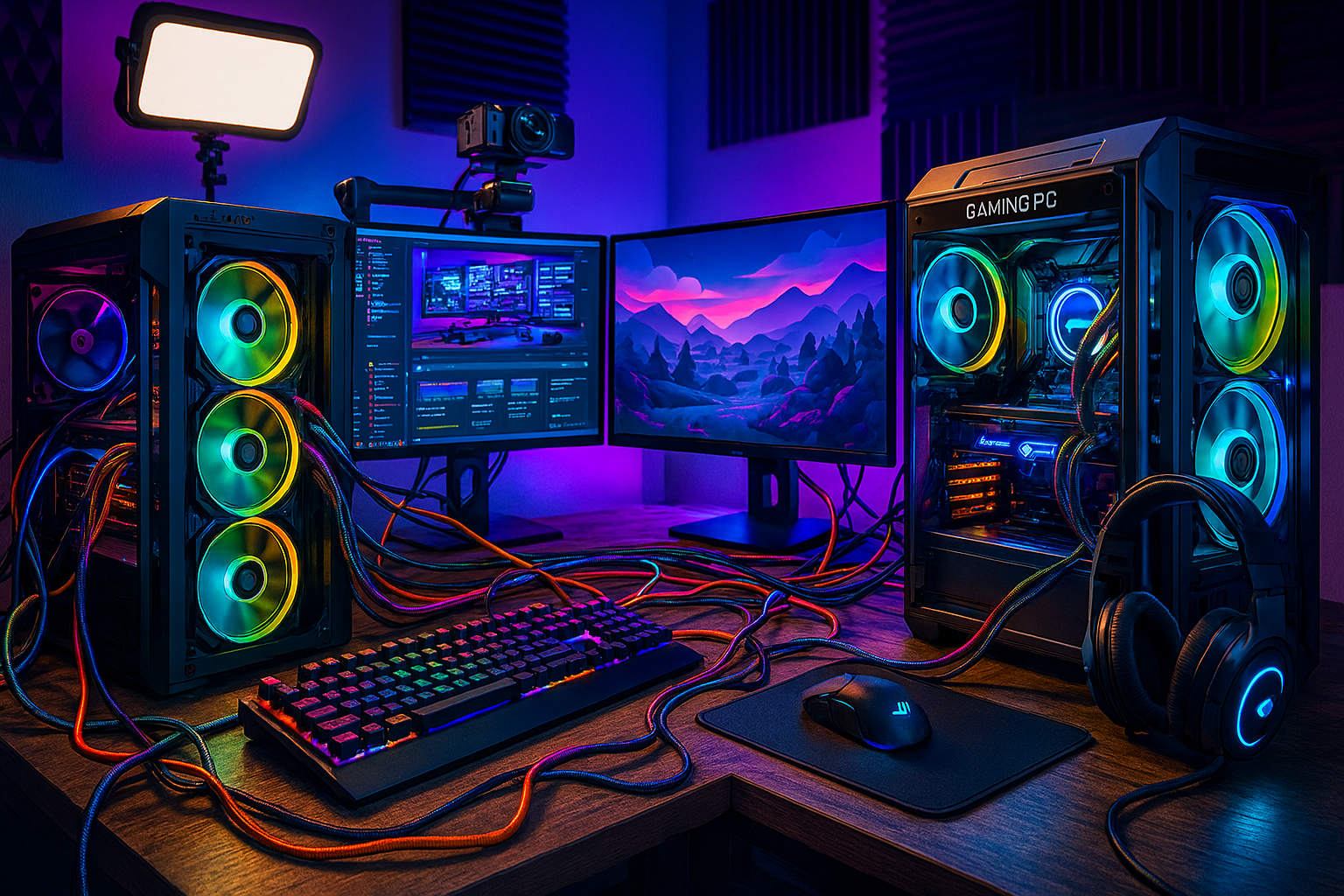Before Getting Started
This guide assumes you already have 2 PC's each with their own monitor, keyboard, mouse and usb headset with microphone.
You will still do everything you do now on your Game PC, music, chat, gaming, but your streaming will be on another computer.
You can use your Game PC for just gaming with music, chat and stream on your Stream PC (basically what I do), but requires more indepth configurations.
If using a USB headset, it is possible to route all audio from Game PC to the Stream PC via the HDMI / DP
Having 2 PC's, one monitor, one keyboard and one mouse can be worked with the use of a KVM switch, but there will be keyboard / mouse "lag" when switching PC's. (What I started on)
Digital mixers like Voicemeter, Bannana or Potato are not needed. Both OBS Studio and Streamlabs, when openend, will act as your mixer for a basic setup. More complex setups will require a mixer of some sort, digital, physical or both.


